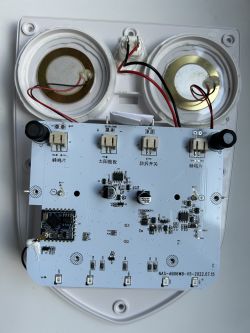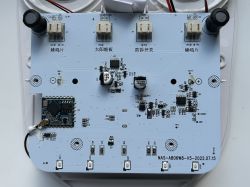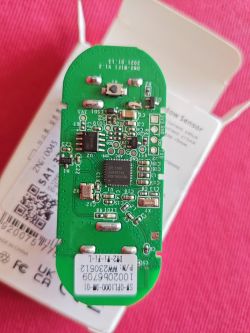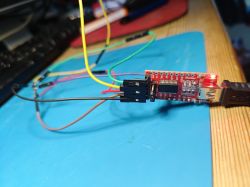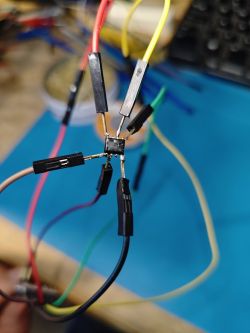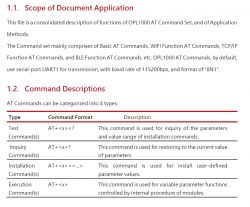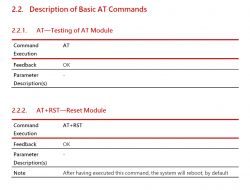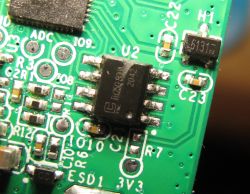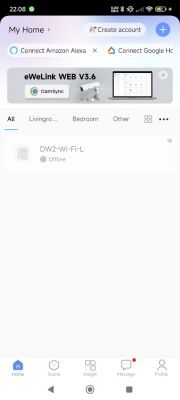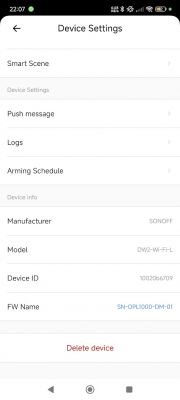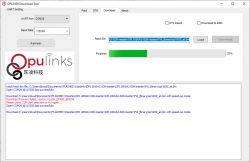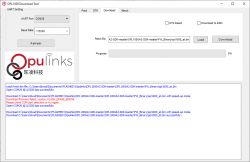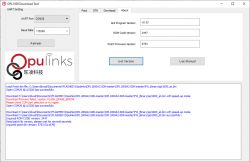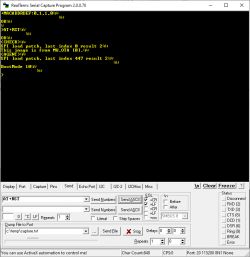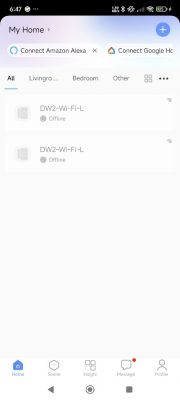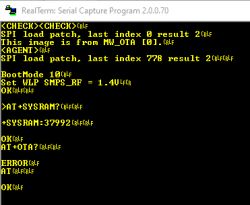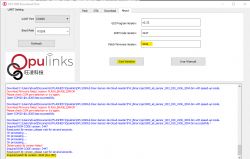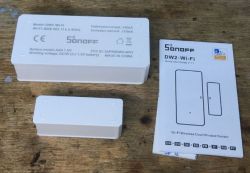
Recently, a reader sent a rather unusual Sonoff door opening sensor. This sensor is built on a WiFi microcontroller, which we have not yet discussed on the forum. Here I will present its interior, backup it's Flash memory via SPI and consider the potential of changing the firmware of this gadget.
Purchasing the sensor
The sensor turned out to be very cheap, less than 30PLN. That's odd. Equally strange is the fact that the RF433 keyword is inserted in the title of the bids, even though radio communication this gadget does not have, there is only WiFi:
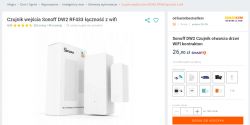
In the description, the seller explains that the earlier version, DW1, relied on RF433MHz, while the one in the offer uses WiFi:
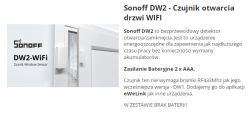
Dimensions:

Here's what I got:


Contents:
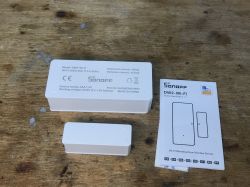
Case information:
- Quiescent current: <=40uA
- Emission current: <=15mA
- Model: DW2-Wi-Fi
- FCC ID: 2APN5DW2-WIFI
The sensor can be paired with the eWeLink app, then it works flawlessly, but this I already described in the case of the first reviewed door sensor:
Wifi door/window sensor - test, interior, integration with the rest of the devices so here I skip it.
Inside of the sensor
You have to pull off the battery cover first:
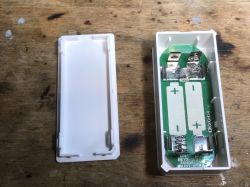
PCB is held on by two hooks. Just undermine these hooks, then you can remove the board:


PCB designation:
DW2-WiFi V1.2
2021.01.13
You can see the WiFi module separately, and the Flash memory chip separately:
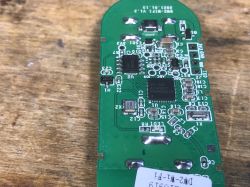
H1 is the Hall sensor, Q1 is the transistor.
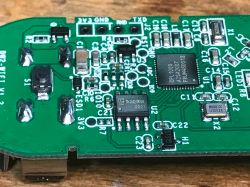
The Hall sensor is designated as 6131.
The SPI bone is TH25Q80UA.
The microcontroller is OPL1000 - manufactured by Opulink. It offers connectivity via WiFi and Bluetooth.
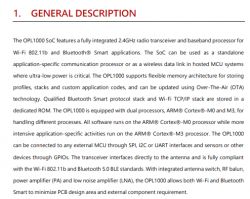
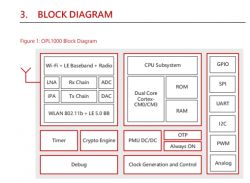
There is no open source software for IoT devices for this microcontroller yet. Documentation, however, is available:
https://github.com/Opulinks-Tech/OPL1000-HDK/tree/master
A few more photos:
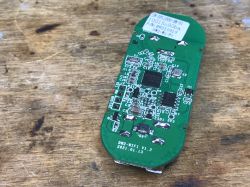

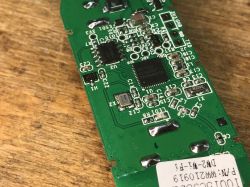
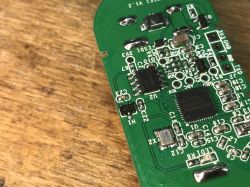
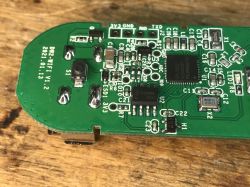 .
.
Dumping the Flash [/size]
For a start, I decided to dump flash memory, So I started by desoldering the Flash chip (I don't trust the clip method):

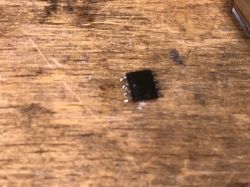
Then I loaded its content with a CH341 programmer:
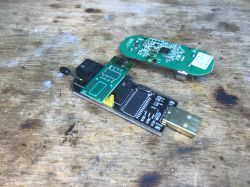
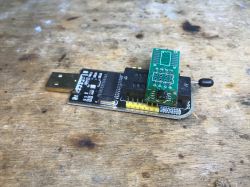
Programmer tool (NeoProgrammer 2.2.0.3) recognized the chip (SPI ID: EB6014):


I was able to read the data, and I even found some SDK-related character strings inside:
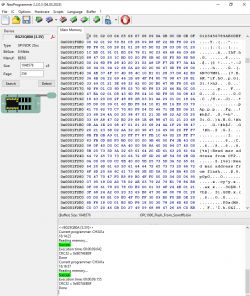
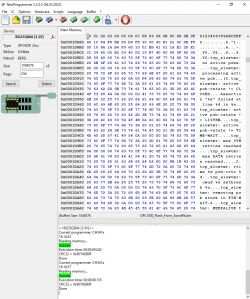
I posted a copy of the firmware here:
https://github.com/openshwprojects/FlashDumps/commit/a4d13b2bee408249def6e3797748db6a45ddaee7
[b] Programmable OPL1000
SDK is available and in at least several versions:
https://github.com/Opulinks-Tech/OPL1000A2-SDK
https://github.com/Opulinks-Tech/OPL1000A1-SDK
Even English-language documentation is available:
https://github.com/Opulinks-Tech/OPL1000A1-SDK/tree/master/Doc/en
At this point I have not taken further steps to get it up and running, but maybe that will change soon.
Summary
This product is very cheap, but at this point it can not be easily cut off from the cloud. There is the potential to prepare firmware for it (it will probably be a port OpenBeken ), but so far I know of only one device where it exists (just that door opening sensor from the topic), so I don't know if it would make much sense to do all the porting for one device.... and maybe you guys can tell me
Have any of you perhaps encountered any devices based on OPL1000?
I invite you to share information.[/b]
Cool? Ranking DIY Helpful post? Buy me a coffee.



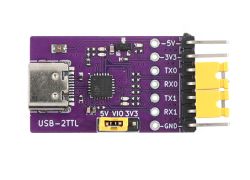
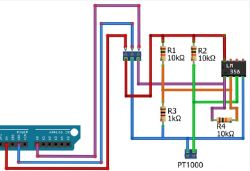
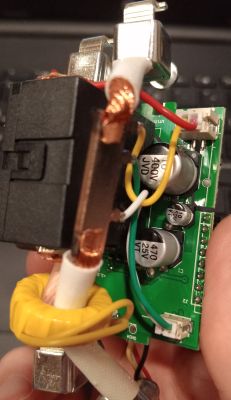

![[OPL1000] Sonoff DW2 door/window opening sensor - teardown, firmware [OPL1000] Sonoff DW2 door/window opening sensor - teardown, firmware](https://obrazki.elektroda.pl/3106296000_1722344279_thumb.jpg)
![[OPL1000] Sonoff DW2 door/window opening sensor - teardown, firmware [OPL1000] Sonoff DW2 door/window opening sensor - teardown, firmware](https://obrazki.elektroda.pl/4406664700_1722344279_thumb.jpg)
![[OPL1000] Sonoff DW2 door/window opening sensor - teardown, firmware [OPL1000] Sonoff DW2 door/window opening sensor - teardown, firmware](https://obrazki.elektroda.pl/1408196900_1722344279_thumb.jpg)
![[OPL1000] Sonoff DW2 door/window opening sensor - teardown, firmware [OPL1000] Sonoff DW2 door/window opening sensor - teardown, firmware](https://obrazki.elektroda.pl/9352903200_1722344479_thumb.jpg)
